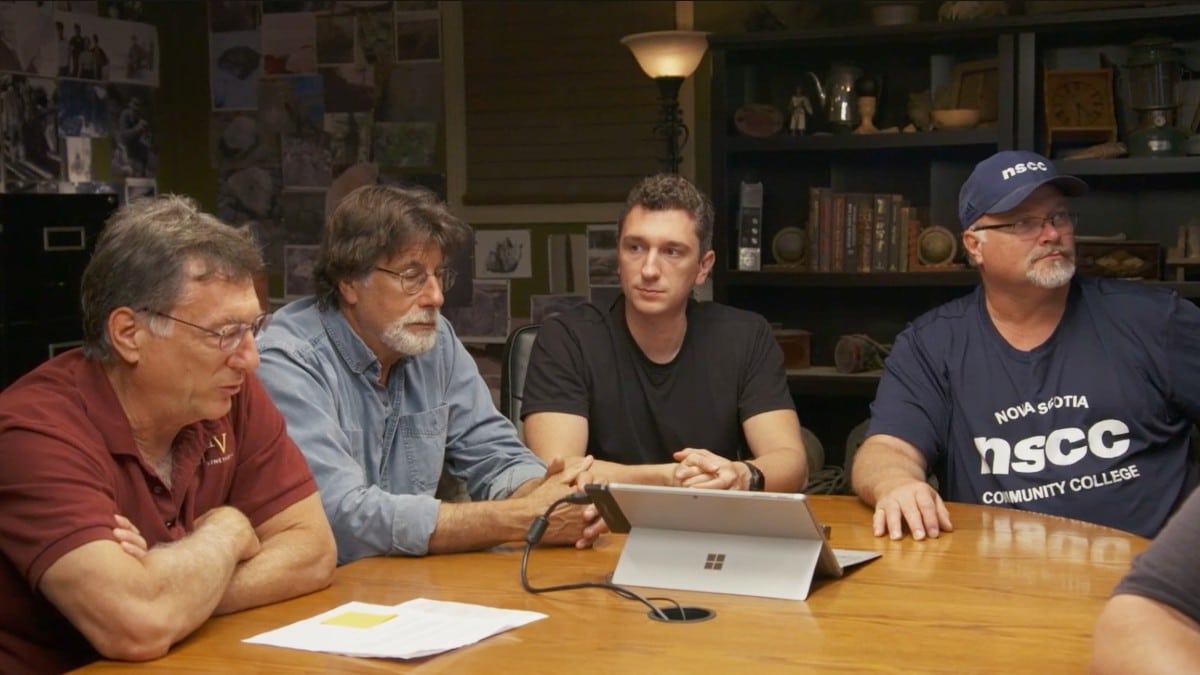
This week on The Curse of Oak Island, the team opened up a whole new area of the island to search following a new revelation from an ancient 14th-century map.
The Oak Island team have been enjoying the excitement drummed up by their recent discoveries of gold in the Money Pit area, and they are starting to plan how and when to bring in the large 10 feet steel caisson shafts. The team agreed with ROC Equipment and Irving Equipment Ltd that they would want four caissons in four to six weeks.
But, in the meantime, most of this episode revolved around the 14th-century map discovered by historian Zena Halpern. The map in question is a rough hand-drawn map of the island with various locations marked. It was written in French, and Halpern dated it to 1347 and concluded that it was drawn by a Templar Knight or somebody connected to the Templars.
Halpern first brought the map to the attention of the Lagina brothers in 2016, and since then, the team and various experts have attempted to decipher it, albeit with somewhat limited success.
This week, the team assembled in the War Room to hear from Oak Island theorist Matt Sandt, who has been studying Halpern’s map, and recently contacted Marty Lagina to say he’d found something the guys had missed.
Was Zena Halpern’s map misinterpreted?
Sandt examined the original French version of the map alongside the English translation, and he noticed a mistake in the English one. The English map pinpointed two locations that were labeled “the hole under” and the “hatch.” The Oak Island team have long been fascinated by the “hatch” and have tried, and failed, to locate it.
However, Sandt now claims that the hand-drawn location pointer lines for the English version were incorrect and that it was just one location called “the hole under the hatch.” This makes a helluva lot more sense grammatically and also explains why the guys never found the so-called “hatch” as they were looking in the wrong place.
The below image shows the initial English version with the incorrect pointer lines:

Whereas a close-up of Sandt’s version reveals that “the hole under the hatch” is one location.

Oak Island team then went in search of the hatch
Sandt suggested to the guys that they take a shovel and go searching for the hatch, to which the guys promised to do precisely that. In fact, they did one better than that, they enlisted the help of CSR Geosurveys Ltd, who brought in some fancy equipment to examine the ground in Lot 22 and Lot 4, where Sandt had essentially suggested they look for the hatch.
The CSR guys conducted a VLF survey of the area, which uses radio waves to map under the surface and, hopefully, reveal any hidden tunnels or shafts. The results of this survey, unfortunately, will take some time, so we’ll have to wait for a future episode.
But, the geoscientists also conducted a magnetometer survey, which records ferrous metals under the ground, and they came back with some interesting results. They noted a large anomaly in Lot 4, which they advised the Oak Island team to investigate.
Jack Begley pointed out that the anomaly was very close to the so-called hatch marked on Zena’s map, and he was backed up by surveyor Steve Guptill, who said it matched his work in mapping the general location of the hatch.

Unfortunately, there was no time to dig it up this week, but as Rick pointed out, this has “opened up a whole new search agenda.” And just maybe it will lead to the discovery of some Templar treasure and some ancient Christian relics.
The anomaly more closely matches “the-valve” location on the original French map than “the hole under the hatch”
But why are they searching for the hatch where the squiggly line points to the valve? Am I missing something?
Start digging–a whole episode on finding a metal spike! stop the bull!
Top of map reads La Anse and not ANGEL
Anse in french is Handle.
or THE HANDLE Many words translated french to english are not properly translated.